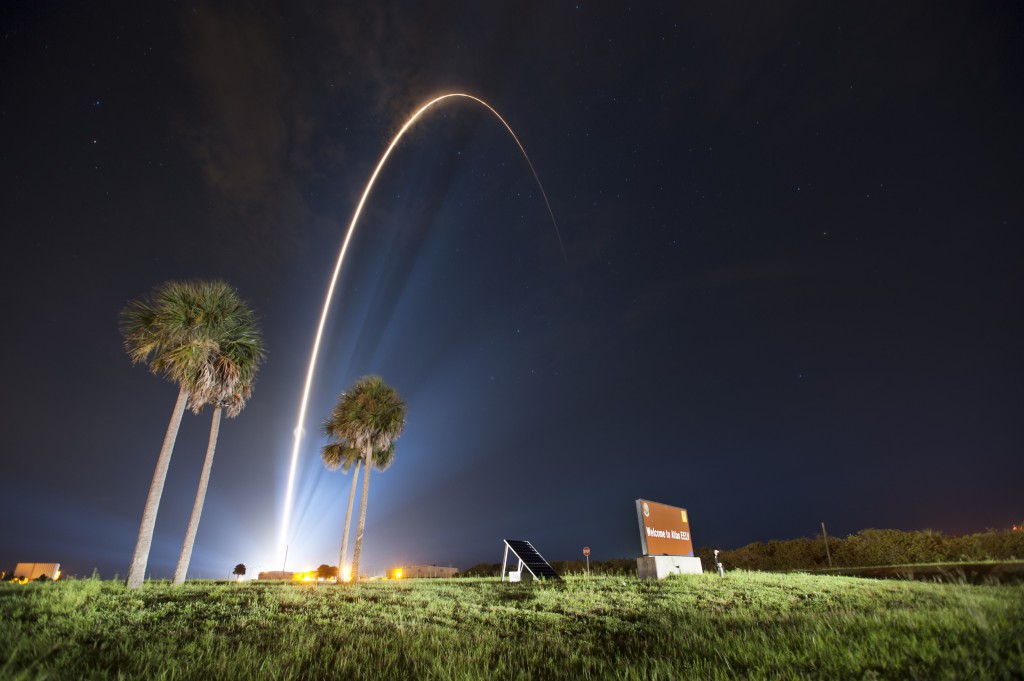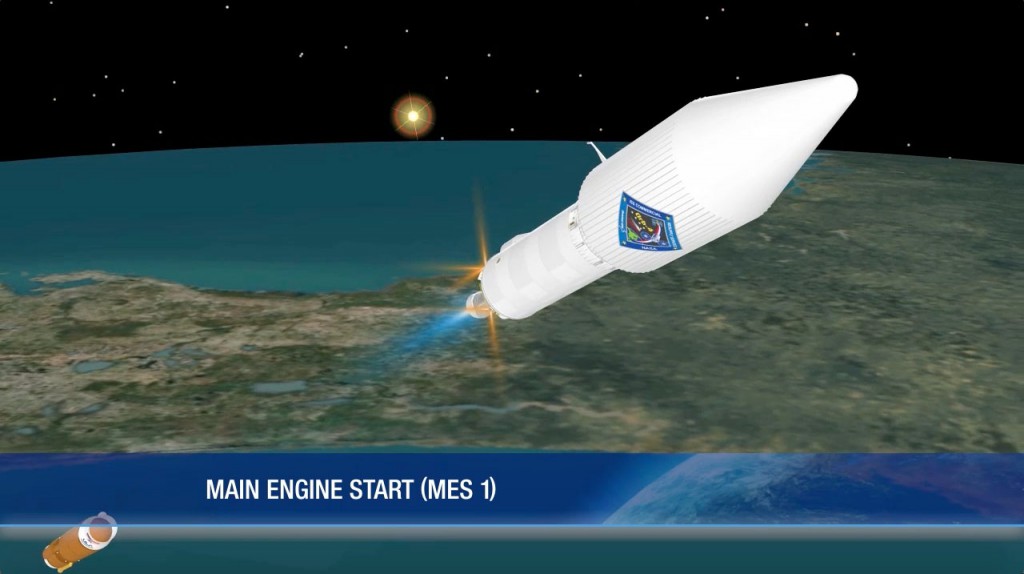Follow the Atlas 5 rocket’s ascent into orbit from Cape Canaveral’s Complex 41 launch pad with the Orbital ATK Cygnus resupply ship for the International Space Station. Launch is scheduled for Tuesday at 11:05 p.m. EDT (0305 GMT).
T+00:01.1: Liftoff

The United Launch Alliance Atlas 5 vehicle, designated AV-064, will lift off and begin a vertical rise away from Complex 41 at Cape Canaveral Air Force Station, Florida.
T+01:22.6: Mach 1 and Max Q

The Atlas rocket achieves Mach 1 some 83 seconds into the flight, then passes through the region of maximum dynamic pressure at 94 seconds.
T+04:16: Main Engine Cutoff

The RD-180 main engine completes its firing after consuming the load of RP-1 kerosene fuel and liquid oxygen supply in the Atlas first stage.
T+04:22: Stage Separation

The Common Core Booster first stage of the Atlas 5 rocket separates from the Centaur upper stage. Over the next few seconds, the Centaur engine liquid hydrogen and liquid oxygen systems are readied for ignition.
T+04:32: Centaur Ignition

The Centaur RL10 engine ignites for the only upper stage firing of the mission. This burn will inject the Centaur stage and Cygnus spacecraft into low-Earth orbit.
T+04:40: Nose Cone Jettison

The two-piece, 14-foot-diameter payload fairing that protected the Cygnus during the atmospheric ascent is separated to reveal the craft to space.
T+18:10: Centaur Engine Cutoff

At the conclusion of this firing, the Centaur will have delivered the Cygnus spacecraft into the targeted circular orbit of 124 nautical miles, inclined 51.6 degrees to the equator.
T+20:59: Spacecraft Separation

The Orbital ATK Cygnus cargo delivery spacecraft for the International Space Station is released into orbit from the Centaur upper stage to complete the AV-064 launch. (Centaur will be deorbited shortly thereafter).
See earlier Cygnus OA-6 coverage.
Our Atlas archive.



